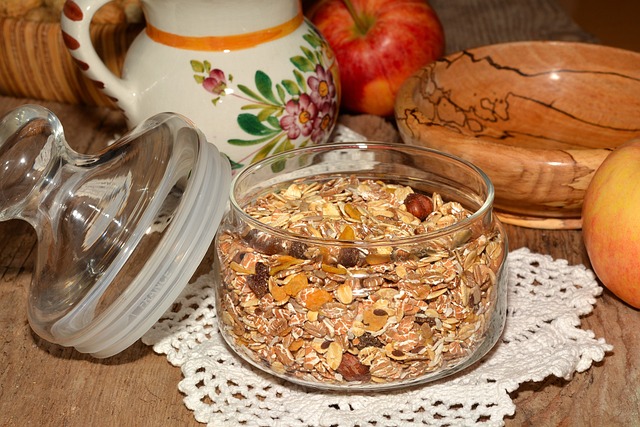The Dukan Diet is a low-carb, high-protein diet that promotes quick weight loss while also promising long-term results. While this may sound enticing, the diet has certain disadvantages, particularly for individuals with diabetes.
What Exactly Is the Dukan Diet?
The Dukan Regimen was developed by French doctor Pierre Dukan as a low-carbohydrate, high-protein weight-loss diet.
The diet is divided into four phases: Attack, Cruise, Consolidation, and Stabilization, and is intended to facilitate quick weight loss.
Each phase has its own set of criteria, beginning with the most strict guidelines and a limited list of acceptable items in the first phase and progressing to more liberal guidelines as you proceed through the program.
Phase 1: Launch an attack
The Attack phase, sometimes known as the “pure protein” phase, is the diet’s shortest phase, lasting between two and seven days.
During this phase, participants consume an unlimited amount of protein from a list of 68 permitted protein-containing foods, as well as 1.5 tablespoons of oat bran mixed with water on a regular basis.
The projected weight loss during this phase, according to the Dukan Diet plan, is between 2 and 8 pounds.
Phase 2: Travel
The second phase, known as the Cruise phase, allows for the consumption of 100 foods, including those on the original “pure protein” list.
The list includes both proteins and vegetables but excludes fruit, starchy vegetables, bread, and other grains. In addition to the 100 permitted foods, diet participants must consume 2 tablespoons of oat bran per day for the duration of the phase.
The amount of time spent in the Cruise phase varies based on how much weight you want to lose. The Dukan Diet predicts that someone will lose 2 pounds each week during this period.
Phase 3: Consolidation
The Consolidation phase allows the same 100 foods as the Cruise phase but also includes fruits, whole grains, starches, and cheeses.
This phase necessitates one “pure protein” day per week, as well as the continued consumption of two tablespoons of oat bran per day. Dieters can also anticipate having two celebratory meals per week.
It is predicted that you will spend five days in this phase for every pound lost in the Cruise phase. This means that if you dropped 10 pounds during the Cruise phase, you’d be in the Consolidation phase for about 50 days.
Phase 4: Stabilization
The fourth and final phase, Stabilization, is designed to last for life. It accepts all foods from all food groups and, like the Consolidation phase, demands one “pure protein” day per week. This phase also increases the total amount of oat bran consumed per day to 3 tablespoons.
It should be noted that all phases of the diet encourage daily physical exercise.
Diabetes and the Dukan Diet
Living with diabetes necessitates monitoring blood glucose levels to ensure they remain within an appropriate range. Blood glucose is managed using a variety of measures, including establishing a physical activity program, using medicines or insulin as prescribed, and making dietary changes.
There are numerous dietary patterns that can help with diabetes management and weight loss. However, an extremely low carbohydrate diet, particularly as suggested during the first phase of the Dukan Diet, is not safe.
The three phases of the Dukan Diet have varying effects on total calorie and macronutrient consumption. As a result, the possible benefits and cons of the diet for a diabetic differ depending on the phase.
However, when looking at the diet’s guidelines, several common themes emerge.
Potential Drawbacks- May not be suitable for Long-Term Weight Loss.
In general, the Dukan Diet is a low-calorie, restricted diet designed to promote weight loss. This may be interesting to diabetics who also want to lose weight because it promises a quick decline in body weight in the first two phases of the diet. However, this strategy may not be the healthiest option, particularly for individuals with diabetes.

It is simple math to understand that people will lose weight if they follow the Dukan Diet’s very low-calorie requirements, but this does not imply that this is a healthy and sustainable eating plan. Very low-calorie and low-carb diets are not for everyone.
The Dukan Diet is regarded as an exceedingly low-calorie diet, particularly during the first two phases. According to a 2021 article published in the Journal of Obesity & Metabolic Syndrome, stringent diets are rarely recommended for long-term weight loss.
However, if quick weight loss is required for medical reasons, a very low-calorie diet combined with behavior modification programs may be recommended. These types of restrictive, extremely low-calorie diets are usually advised by a medical expert and are not meant to be followed without supervision.
Losing weight with Dukan Diet
High-protein diets, such as the Dukan Diet, have been demonstrated in studies to be effective for weight loss. However, there is no accepted definition of the total protein required for a diet to be classified as high in protein.
According to a 2020 article published in the Journal of Obesity & Metabolic Syndrome, some studies describe a high-protein diet as one that provides up to 45% of total calories from protein, while others define it as 25% of total calories from protein. The percentage of total calories from protein on the Dukan Diet might exceed 50%, especially in the first two phases.
While the Dukan Diet may induce quick weight loss in the beginning, there is little evidence to imply that the weight loss is long-term.
Could Lead to Inadequate Nutrient Intake
The Dukan Diet raises the risk of inadequate nutrient intake because it removes various food groups in the first few phases.
A short research of 51 women on the Dukan Diet in Poland discovered that participants had insufficient intakes of important nutrients such as calcium, vitamin C, and potassium, as well as excessive intakes of sodium, protein, and phosphorus. In the long run, these nutritional imbalances might have a negative impact on health.

Eliminating numerous dietary groups, particularly vegetables decreases total fiber consumption. Fiber is an indigestible carbohydrate present in plants such as fruits, vegetables, nuts, seeds, beans, and grains. Consuming high-fiber meals is a crucial tool for blood sugar management, but the Dukan Diet restricts the intake of high-fiber foods.
Fiber not only helps with blood sugar control but is also linked to improved cardiovascular and digestive health. Furthermore, fiber promotes satiety, which may aid with weight management.
Contradicts Expert Advice
Diabetes patients have been demonstrated to benefit from eating a plant-based diet.
The Diabetes Expert Consensus Statement, published in May 2022, is designed to provide advice for people with type 2 diabetes. Multiple consensus statements on diabetes care, including dietary interventions, were discovered by experts. The importance of eating plants in diabetes management was emphasized in the statement.
The recommendations emphasize [that] for persons managing diabetes, a plant-based diet plan should be the core of a healthy eating plan. The Dukan Diet is not intended to be a plant-based eating plan.
While the Stabilization phase promotes eating meals from all dietary groups, it also emphasizes a weekly “pure protein” day. The Dukan Diet does not fit the consensus statement’s definition of a diet based mostly on plants.
Potential Benefits
Despite the Dukan Diet’s numerous disadvantages, there are a few potential benefits to adopting the diet if you have diabetes.
Encourages Physical Exercise
One of the Dukan Diet’s advantages is that it stimulates physical activity throughout the diet. Physical activity is linked to better insulin sensitivity and blood glucose control. Regular exercise has also been linked to improved cardiovascular health and has been demonstrated to aid with weight management.
Could Encourage Healthier Habits
If you opt to follow the Dukan Diet, you may want to bypass the first two phases and instead focus on Consolidation and Stabilization. Both phases are beneficial for diabetics because they encourage a wide variety of foods.
The Consolidation and Stabilization phases offer the most potential for blood sugar management simply because there are more dietary options like fruit and other carbohydrate-containing items.
The Consolidation and Stabilization phases, on the other hand, still advocate one “pure protein” day, which should be avoided if you have diabetes due to extremely low carbohydrate consumption. There is a danger of hypoglycemia, especially if you are using insulin and other diabetes drugs.
Diet Warning Signs
With so many popular diets available today, identifying all of the red flags in any diet plan is impossible. However, there are several common themes to look out for when deciding whether to start a new diet.

Red flags include diets that exclude numerous food groups and those that follow the same procedure for everyone. Everyone has different carbohydrate tolerances, and cookie-cutter diets like the Dukan Diet should raise a red alert.
Diet red flags include “if the diet is very restrictive and unsustainable if it encourages overconsumption of a specific food while avoiding others, if it is promoted by a celebrity/influencer but lacks science-based evidence, if it is very low in calories if it causes you to feel shame or guilt if you decide to eat normally, or if it enhances anxiety and stress around food and food decisions, including eating with your family/friends and other social situations.”
To Conclusion
The Dukan Diet is one of many popular diets that promise quick and long-term weight loss. Despite the encouraging claims, this diet is unlikely to be a good option for diabetics.
In its early stages, the diet’s stringent approach results in an extremely low-calorie diet deficient in many nutrients. This strategy may not be sustainable for long-term weight management.
“It is critical to stick to a healthy eating plan. If you go on and off an eating plan, your weight and blood sugar levels will fluctuate.
The greatest diabetes diet is one that promotes health by consuming adequate nutrients while also keeping blood sugar levels within acceptable ranges. Healthy eating patterns and consistent physical activity are critical components of blood sugar management. Make certain that the diet you choose is one you can stick to.

